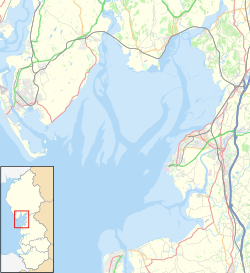| Cockersand Abbey | |
|---|---|
 | |
| Location | Thurnham, Lancashire |
| Coordinates | 53°58′37″N2°52′30″W / 53.977°N 2.875°W |
| Official name | Cockersand Premonstratensian Abbey |
| Designated | 13 January 1915 [1] |
| Reference no. | 1018919 |
Listed Building – Grade I | |
| Official name | The Chapter House, Cockersand Abbey |
| Designated | 2 May 1968 [2] |
| Reference no. | 1362525 |
Cockersand Abbey is a former abbey and former civil parish near Cockerham in the City of Lancaster district of Lancashire, England. It is situated near the mouth of the River Cocker.






